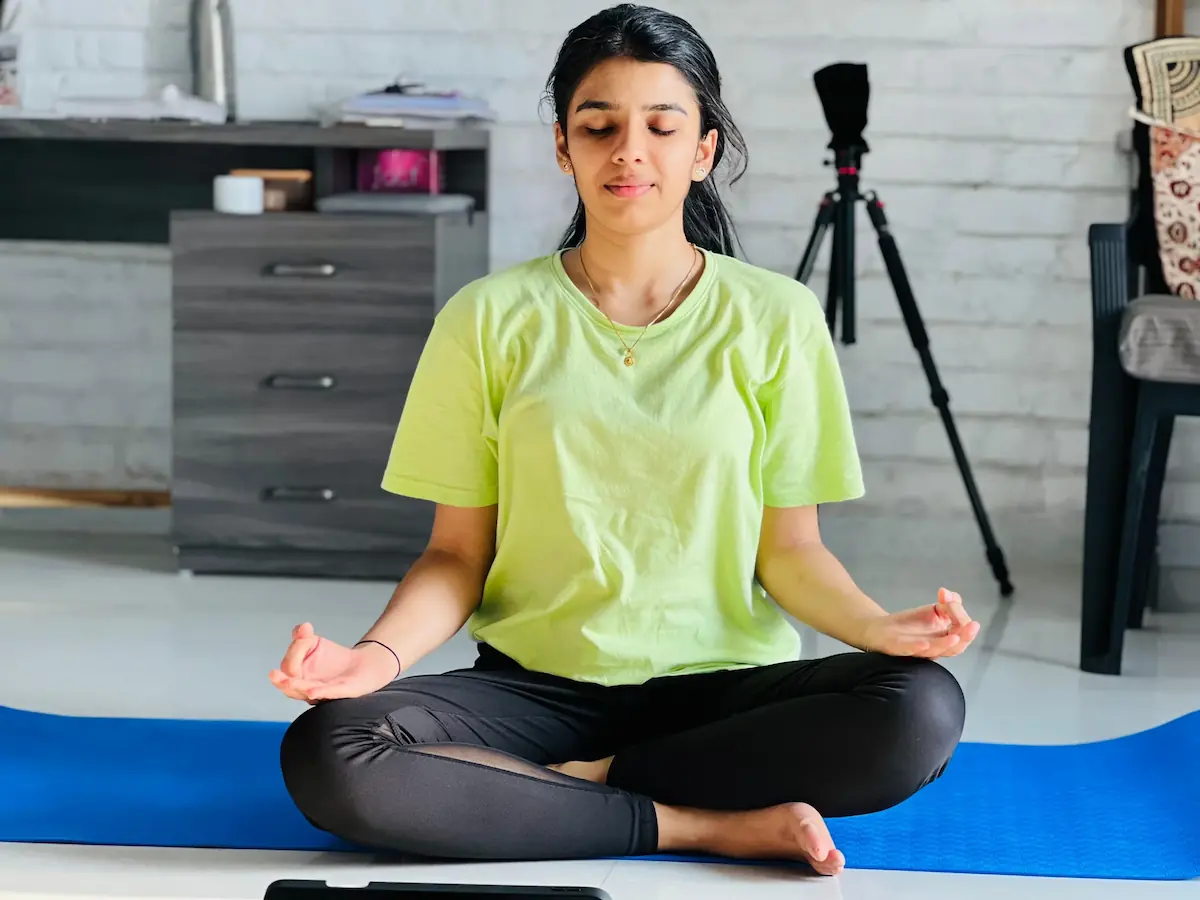Wondering where yoga’s magic begins? Hatha yoga is the cornerstone—a practice that shapes styles like Vinyasa and Ashtanga. But what is hatha yoga? It’s a gentle, ancient method blending poses (asanas), breathing (pranayama), and mindfulness to enhance strength, flexibility, and peace.
This guide dives deep into hatha yoga benefits, lists 10 hatha yoga poses to master, and explores its history, cultural role, and practical tips. Plus, we’ve added FAQs to answer your questions. Ready to start? Let’s uncover this foundational practice!
New to yoga? Build your skills with our Yoga Poses for Beginners.
What Is Hatha Yoga?
Hatha yoga, meaning “force” or “effort” in Sanskrit, originated around the 11th century in India, detailed in texts like the Hatha Yoga Pradipika by Swami Swatmarama. It emphasizes physical postures, breath control, and meditation, serving as the root for most modern yoga styles. So, what is hatha yoga in practice?
It’s a slow, deliberate approach where poses are held for 5–15 breaths to perfect alignment and build awareness. Unlike fast-paced flows, it focuses on feeling each movement deeply. Classes typically last 45–90 minutes in serene studios or homes, making it versatile. Historically, it was used by yogis to prepare the body for long meditations, blending physical and spiritual growth. Want yoga’s broader story? Check out What Is Yoga?.
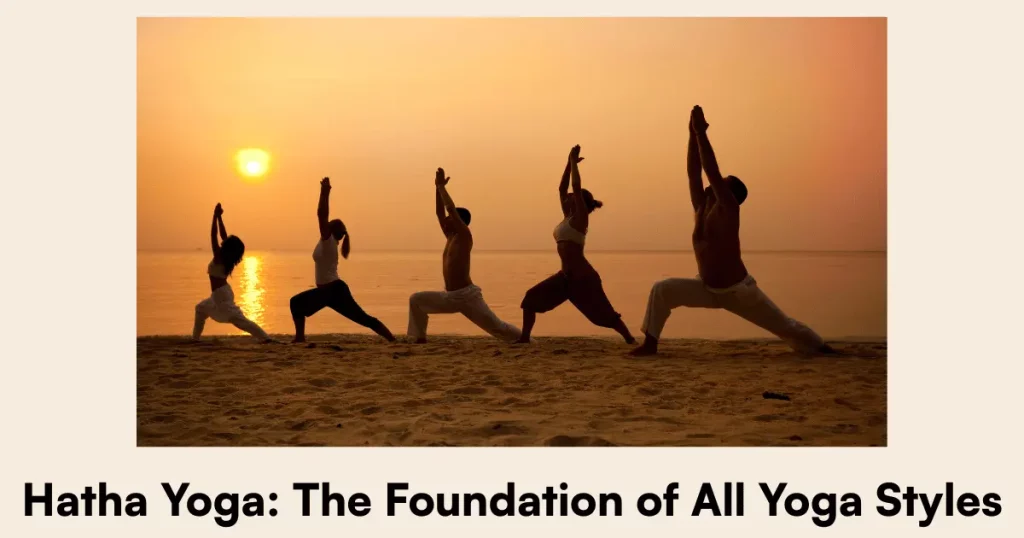
Key Features
- Pace: Slow—1–2 poses per minute.
- Focus: Alignment, breath, and inner calm.
- Setting: Quiet spaces, from dimly lit studios to cozy home corners.
- Cultural Role: Once a spiritual practice for ascetics, now a global wellness tool.
Who Can Practice?
Hatha welcomes beginners, seniors, or those with injuries. It’s ideal for desk workers, pregnant women (with guidance), or anyone seeking a mindful break. Its adaptability shines across ages and fitness levels.
The Cultural and Historical Significance
Hatha yoga isn’t just exercise—it’s a cultural treasure. Born in medieval India, it evolved from tantric traditions, aiming to balance the body’s energies (sun and moon, or “ha” and “tha”). Yogis like T. Krishnamacharya in the 20th century popularized it worldwide, influencing styles like Iyengar and Ashtanga.
Today, it’s recognized by UNESCO as part of India’s intangible heritage, reflecting its role in health and spirituality. This depth makes Hatha a bridge between past wisdom and modern life—perfect for exploring in our Yoga Styles guide.
Hatha Yoga Benefits
Hatha yoga offers a treasure trove of benefits for body and mind. For example, a 2019 Journal of Physical Therapy study showed a 20% posture improvement in 8 weeks with poses like Mountain. Plus, deep breathing cuts cortisol by up to 30%, easing stress (Stress and Health, 2020).
It also boosts flexibility—tight hips loosen with practice—and strengthens the core for better balance. So, hatha yoga benefits include physical resilience, mental peace, and tension relief—all at your pace. Whether you’re new or seasoned, it’s a gentle powerhouse!
Additional Perks
- Better Sleep: Helps 40% of insomniacs sleep longer (Sleep Research, 2021).
- Improved Digestion: Twists like Cat-Cow stimulate gut health, reducing bloating.
- Emotional Balance: Mindfulness lowers anxiety and lifts mood over time.
- Immune Boost: Regular practice may increase white blood cell activity (Journal of Alternative Medicine, 2022).
Who Benefits Most?
Hatha shines for sedentary workers, chronic pain sufferers, or those needing calm. It’s safe for pregnancy with a teacher’s okay and supports athletes seeking recovery—see how it fits in Yoga Styles.
Hatha Yoga Poses to Master
Hatha’s power lies in its poses—here are 10 hatha yoga poses to build your practice. Hold each for 5–10 breaths, focusing on alignment. Use a mat and props like blocks or straps if needed.
1. Mountain Pose (Tadasana)
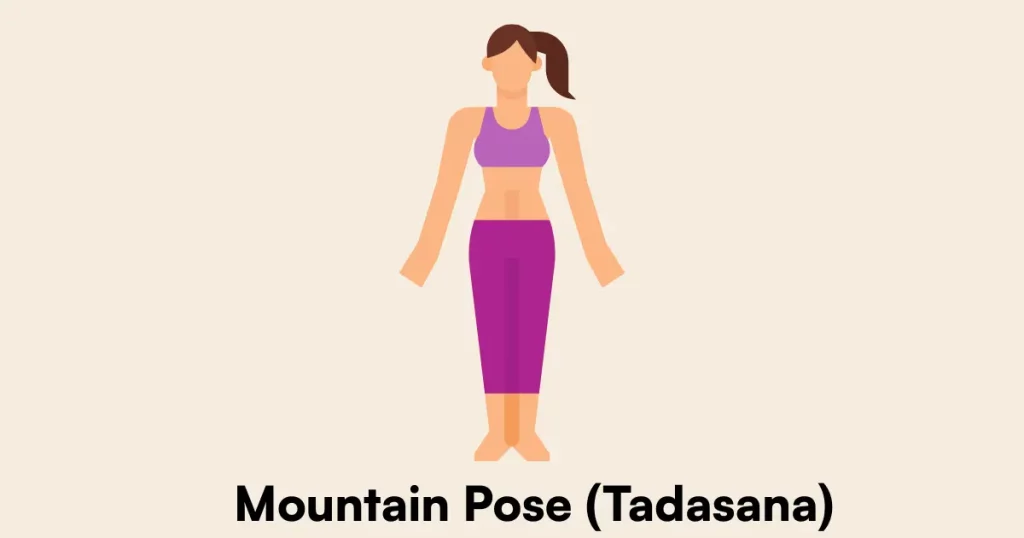
- How: Stand tall, feet together, arms by sides or overhead. Lift chest, tuck chin.
- Benefit: Improves posture, grounds you.
- Tip: Press feet evenly—imagine roots.
2. Downward-Facing Dog (Adho Mukha Svanasana)
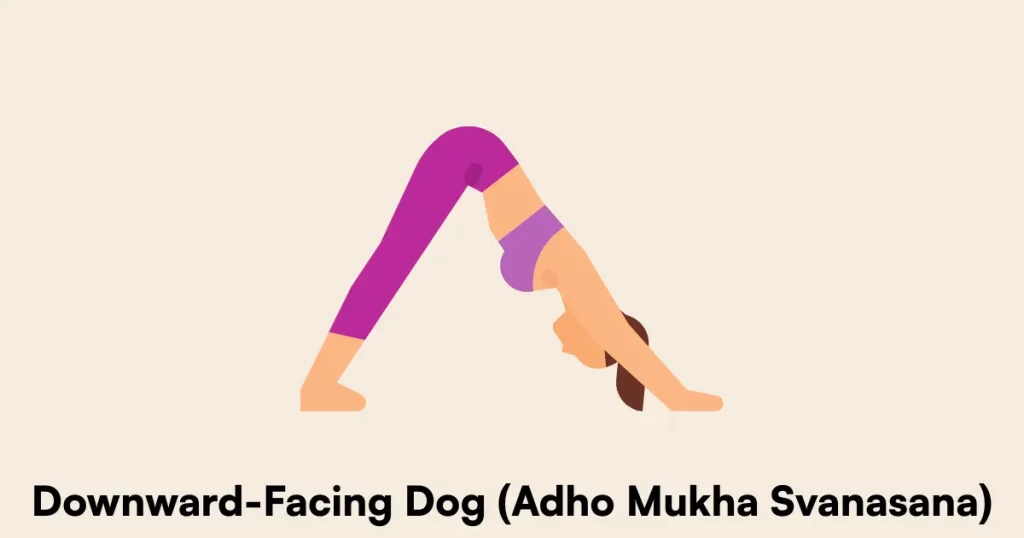
- How: Lift hips up and back from hands and knees into a “V.” Press down.
- Benefit: Stretches hamstrings, strengthens arms.
- Tip: Bend knees if tight.
3. Child’s Pose (Balasana)
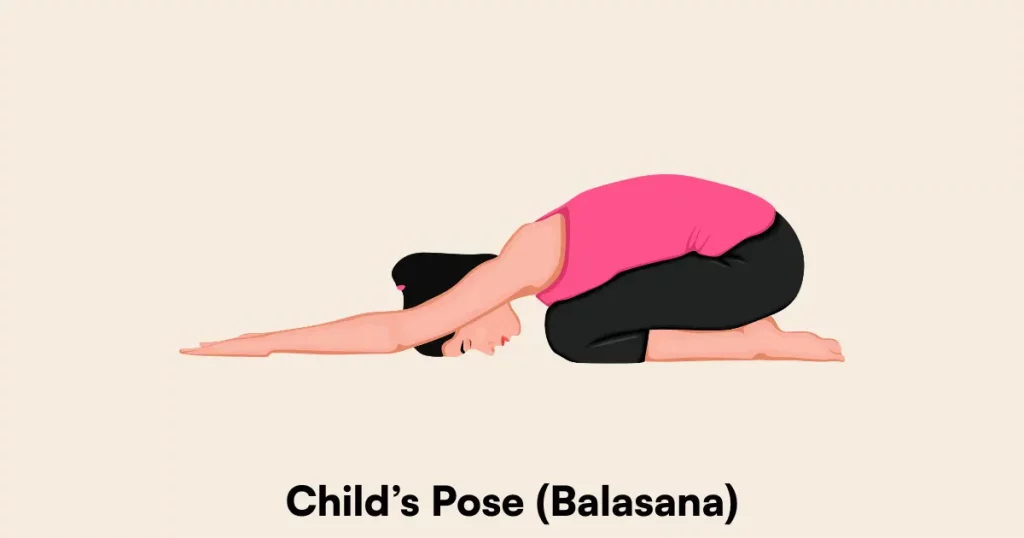
- How: Kneel, sit on heels, forehead to floor, arms forward.
- Benefit: Relaxes spine, calms mind.
- Tip: Add a blanket under knees.
4. Warrior I (Virabhadrasana I)

- How: Step forward, bend front knee, raise arms, back leg straight.
- Benefit: Builds legs, opens chest.
- Tip: Keep knee over ankle.
5. Warrior II (Virabhadrasana II)
- How: Open hips sideways from Warrior I, arms out, gaze forward.
- Benefit: Strengthens legs, focuses mind.
- Tip: Align shoulders over hips.
6. Tree Pose (Vrksasana)
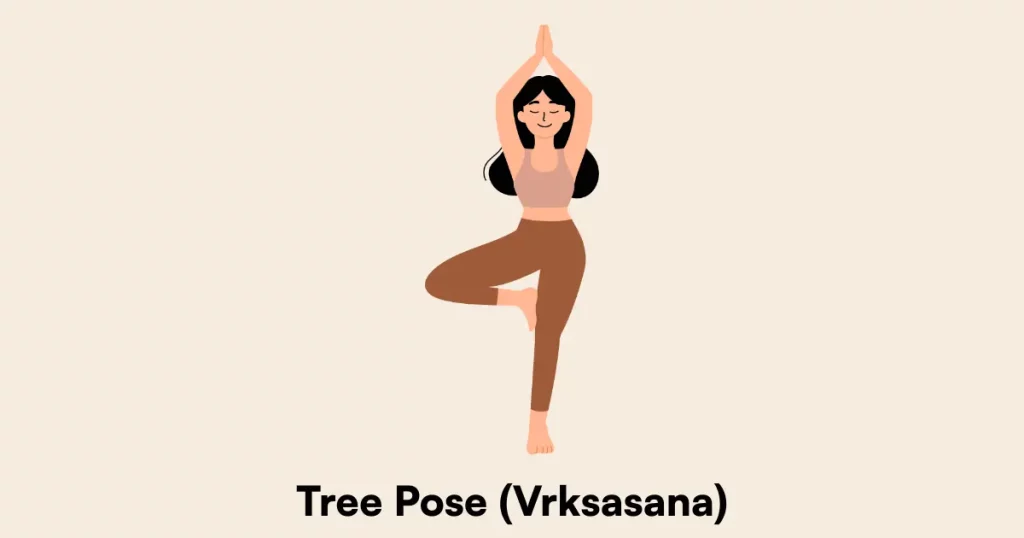
- How: Stand on one leg, foot on thigh or calf, hands at heart or up.
- Benefit: Boosts balance, tones legs.
- Tip: Use a wall if unsteady.
7. Seated Forward Bend (Paschimottanasana)
- How: Sit, legs out, reach for feet, hinge at hips.
- Benefit: Stretches back, soothes nerves.
- Tip: Use a strap if needed.
8. Cat-Cow Pose (Marjaryasana-Bitilasana)
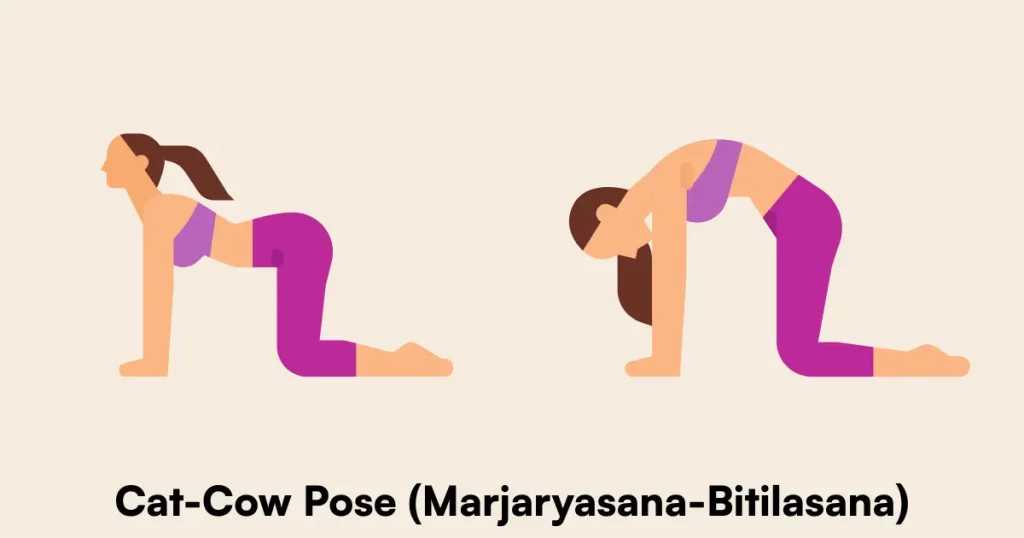
- How: On all fours, arch back (Cow) then round (Cat) with breath.
- Benefit: Loosens spine, aids digestion.
- Tip: Move with each breath.
9. Bridge Pose (Setu Bandhasana)
- How: Lie on back, knees bent, lift hips, arms by sides.
- Benefit: Strengthens back, opens chest.
- Tip: Press feet for lift.
10. Corpse Pose (Savasana)
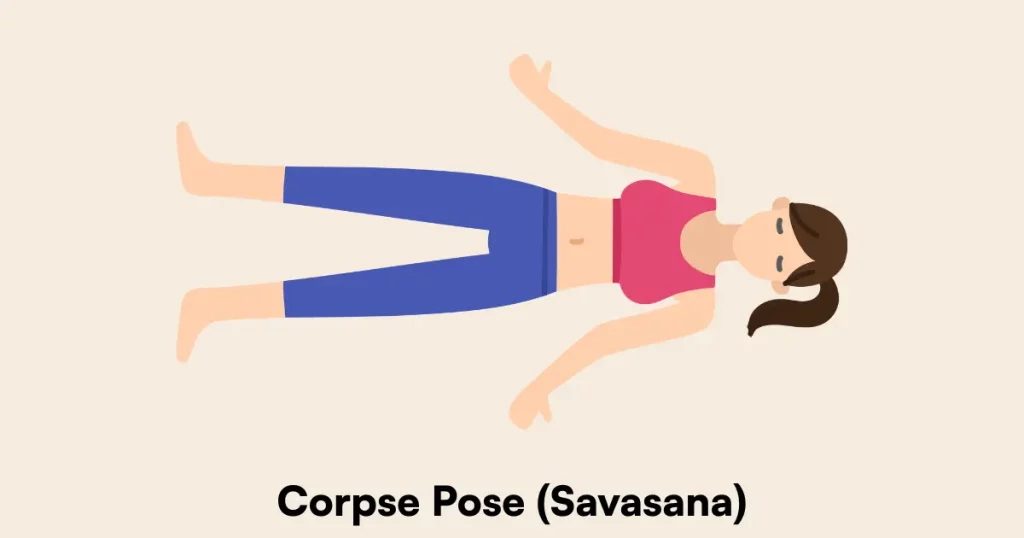
- How: Lie flat, arms relaxed, palms up, eyes closed, breathe deeply.
- Benefit: Relaxes fully, integrates practice.
- Tip: Stay 5–10 minutes.
Explore more in Essential Yoga Poses for Beginners.
How to Start Hatha Yoga
Starting is easy and rewarding! Set aside 15–30 minutes at home with a mat in a quiet space—dim lights help. Follow a “Hatha Basics” video on YouTube (e.g., Yoga with Adriene) or join a local class for guidance. Focus on breath—inhale to expand, exhale to release. Avoid slumping or rushing—see Common Mistakes Beginners Make in Yoga for help. Over time, hatha yoga benefits like flexibility and calm will shine.
Advanced Tips
- Gear: A mat ($20–$30) and blocks ($10 each) support form. Check How to Start a Yoga Practice at Home for setup.
- Schedule: Aim for 3–4 sessions weekly—morning boosts energy, evening unwinds.
- Progression: Start with 5 poses, add 2 weekly. Journal your mood or energy post-practice.
- Meditation: End with 5 minutes of quiet breathing to deepen mindfulness.
FAQs About Hatha Yoga
Is Hatha Yoga Good for Beginners?
Yes! Its slow pace and focus on basics make it perfect for newbies. It’s less intense than Vinyasa—see Yoga Styles for comparisons.
How Often Should I Practice?
Three to four times a week for 20–30 minutes builds a habit. Daily 10-minute sessions work too if you’re busy.
Can I Do Hatha If I’m Pregnant?
Yes, with a teacher’s approval. Modify poses—avoid lying flat late in pregnancy. Prenatal options are in Yoga Styles.
What’s the Difference from Other Styles?
Hatha’s slower than Ashtanga or Vinyasa, focusing on alignment over flow. Explore all in Yoga Styles.
Do I Need Props?
Not always— a mat’s enough. Blocks or straps help with alignment, especially for tight muscles.
Conclusion
Hatha yoga anchors all yoga styles, revealing what is hatha yoga as a gentle, mindful practice with a rich history. Its hatha yoga benefits—improved posture, stress relief, and flexibility—shine through 10 hatha yoga poses like Warrior and Corpse. Whether you’re starting out or refining your journey, it’s a perfect fit. So, roll out your mat today and feel the transformation!
Which pose resonates with you? Share below or dive deeper with What Is Yoga?.

